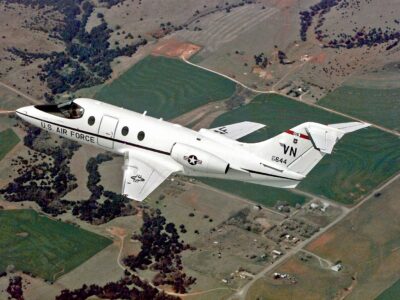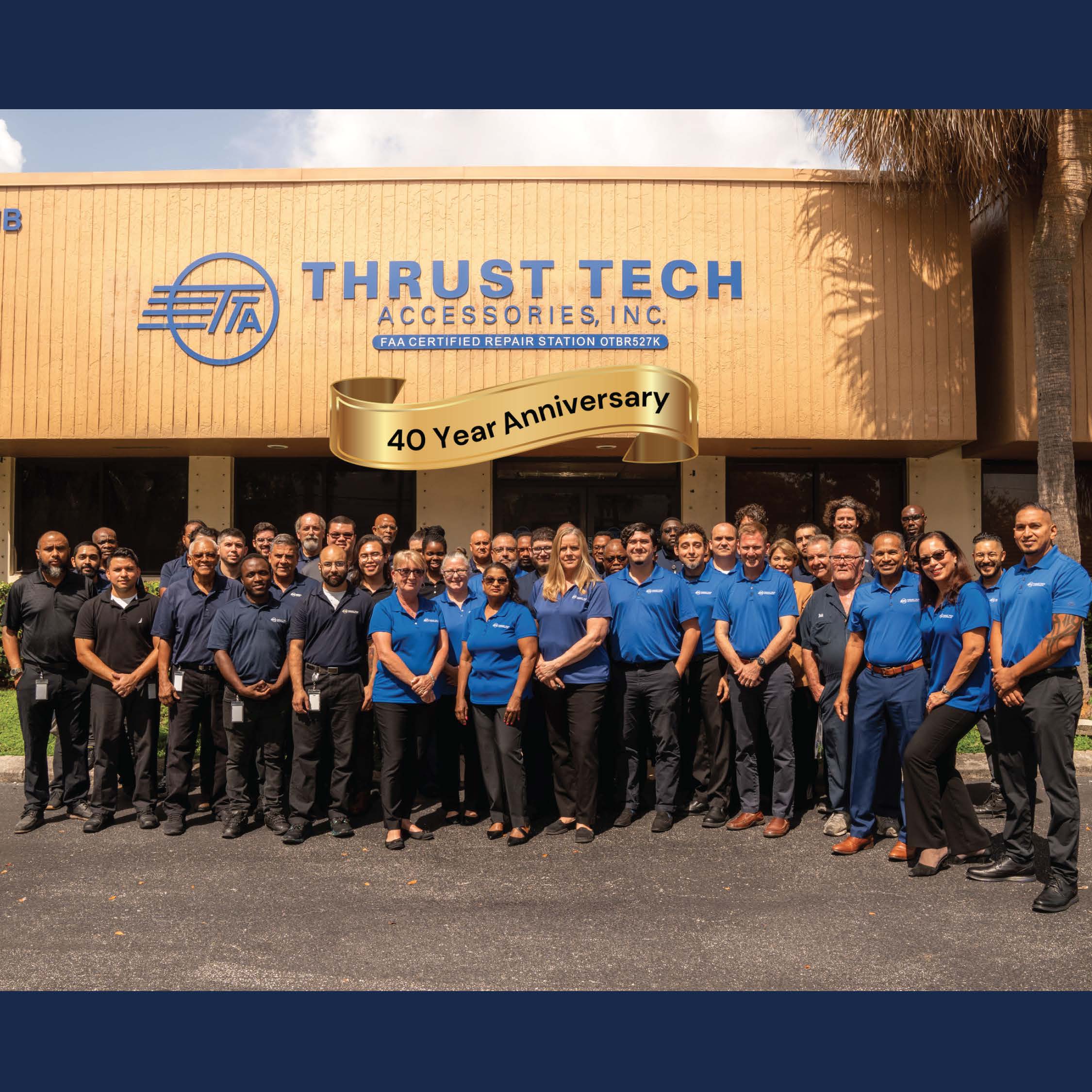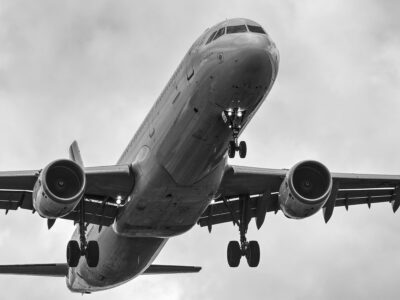
At Thrust Tech Accessories, we take pride in supporting the global fleet of aircraft that keeps the world connected. Today, we’re spotlighting the versatile DHC-8-400 (Q400), a workhorse of the skies relied upon by regional airlines, governments, corporations, and private operators alike Join us as we delve into the Q400’s vital role in aviation and how TTA helps ensure it stays mission-ready for its operators worldwide.
Development
The DHC-8-400 (Q400) has roots that extend back to an evolving series of turboprop-powered regional planes first introduced in 1984 by De Havilland Canada (DHC). That aircraft company was subsequently purchased by Boeing in 1986, and then by Bombardier in 1992, amid the development phase era for the DHC-8-400 (Q400). Several decades later in 2019, Longview Aviation Capital purchased the company and revived the De Havilland Canada brand.
Powered by two Pratt & Whitney Canada PW150 engines, the Dash 8 series built on the success of the Dash 7 with both improved performance and reduced operating costs. But while the aircraft type proved faster than the Dash 7, it lacked that predecessor’s STOL (Short Takeoff and Landing) performance level. That said, today’s Dash 8-400 is highly versatile, capable of operating from small airports and landing on unpaved runways
Enhancements and Variants
As for the evolution of the DHC-8 series, it progressed from the Series 100 (1984–2005) to the more powerful Series 200 (1995–2009) with up to 40 seats. That evolved further into the Series 300 (1989–2009) with up to 56 seats. Today’s Series 400 (1999–2022) has up to 90 seats. Cruising at 360 knots or 667 kilometers per hour, the DHC-8-400 entered service with many enhancements over the previous series, among them new engines, a modernized cockpit, and improved aerodynamics.
Notable is that the Dash 8-400 series is also called Q400 or the “quiet aircraft,” thanks to the addition of such sound-proofing perks as an Active Noise and Vibration System (ANVS) and vibration absorbers. Back in the day, former owner Bombardier set out on a corporate marketing strategy to rebrand it as the Q400, with the Q meant to reflect a quiet alternative to other competitors’ airframes.
Global Impact and Diverse Roles
Certainly, the DHC-8-400, with a cruising speed that is 30 percent faster than most turboprops, is popular for regional airline service. But it’s also a cargo workhorse – used as a freighter. In addition, it has developed a strong reputation as an effective aerial firefighter and for undertaking difficult humanitarian or medical evacuation missions.
With a range that is 40 percent greater than conventional turboprops, it’s also highly adaptable and equipped to handle many challenges. For example, it’s highly adept at operating in both hot and high environments. It’s also well-designed for take-offs and landings in remote communities with limited airport infrastructure.
In 2022, De Havilland Canada reported that the Dash 8-400 could also be converted to a “Quick Change” model. What that means is that an owner/operator can choose to go back and forth between air freight and passenger seats, depending on the flight parameters. They can also focus on packages versus pallets. Or they can adapt the plane into a freighter that has a large cargo door.
Legacy and Future
The first DHC-8-400 (Q400) was introduced in late 1997 and made its first flight in early 1998. More than 620 of these aircraft have been manufactured. Today, the DHC-8-400 (Q400) meets U.S. Federal Aviation Administration (FAA) Stage 5 standards and has also been certified by EASA as meeting ICAO Chapter 14 standards.
While some aircraft have been retired, many others continue in service for 75 or so operators globally. Certainly, the aircraft type has proven its versatility across a wide range of missions. Looking further into the future and to the aircraft’s ultimate legacy, De Havilland of Canada is currently building a new factory in Alberta and hopes to begin producing Dash 8-400s there by decade’s end.
As for the existing fleet of DHC-8-400 (Q400) aircraft, in 2024, De Havilland Canada launched an OEM Certified Refurbishment Program for those aircraft using PW150A engines; and one perk for operators is an increased wing time of 30 percent. That said, it’s vital for operators of existing airframes to continually tap into top-quality MRO services that can help ensure their aircraft will retain its usefulness and perform well for years to come.
Maintenance, Repair, and Overhaul of DHC-8-400 (Q400) Ensures Longevity and Reliability
To maintain the DHC-8-400’s (Q400’s) operational readiness and extend its service life, comprehensive MRO procedures are crucial in ensuring it continues to soar in the skies, and meet the demands of its diverse roles with excellence. With a targeted focus on servicing many of the smaller components of the Dash 8’s airframe, Thrust Tech Accessories is proud of its unique role among the many service providers worldwide that work in concert to keep this airframe type in tip-top condition.
On this DHC-8-400 (Q400) aircraft, TTA has significant experience and provides specialized services on multiple critical components, including hydraulic, pneumatic, electrical power and fuel areas such as:
- Starter Generators DC
- Accumulator
- Hydraulic Reservoir Assembly System 3
- Electric Motor-Driven
- Hydraulic Pump
- Ignition Exciter
- Wheel Speed Transducer
- Valve, Regulator/Relief
- Hydraulic Pump
- Starter, Auxiliary Power Unit (APU)
- Hydraulic Firewall Shut-Off Valve
- Linear Actuator
- Pump & Motor Package
- Shut-Off Valve
- Pack Bypass Valve
- Flow control Shut-Off Valve
- Pressure Switch
To gain insight on the comprehensive range of MRO work required to ensure a DHC-8-400 (Q400) aircraft continues to serve effectively, let’s explore the multiple levels of MRO activities
performed throughout the life of this aircraft.
Intermediate Maintenance Is Vital
To ensure aircraft remain airworthy and operational, routine and intermediate maintenance checks must be performed on a scheduled basis. During these checks, technicians can clearly determine if worn or damaged components must be replaced or repaired.
This is where Thrust Tech Accessories (TTA) steps into gear and excels. Operators around the world often must rely on certified MRO facilities like TTA’s in Fort Lauderdale to provide fast-turn maintenance services. The overarching goal is to prevent aircraft system failures that could lead to unscheduled downtime or in-flight emergencies.
About Thrust Tech Accessories
Thrust Tech Accessories would enjoy the opportunity to explore cost-effective measures to meet the specialized airframe needs of a customer’s DHC-8-400 (Q400). The Ft. Lauderdale-based MRO offers capabilities such as testing, repair service, overhaul service, and of course fast turn-around times.
A recipient of the U.S. Department of Labor’s 2024 Gold HIRE Vets Medallion Award, TTA’s team supports a number of private and business aircraft operators as well as regional airlines, along with overseas air carriers and rotorcraft operators in numerous countries around the globe.
To learn more about TTA’s wide-ranging capabilities to support your fleet and to obtain competitive program bids, please contact us via email at TTAsales@ThrustTech.com or call 954-984-0450.
PHOTO CREDIT: Bornil Amin






